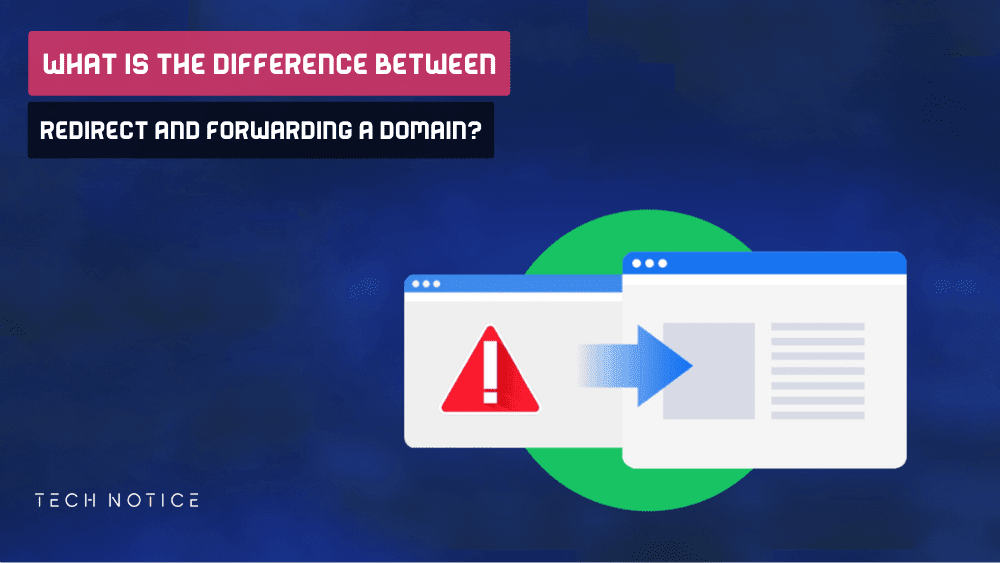When it comes to managing websites, you will come across a lot of technical terms that you need to know.
As an Internet content creator, must have sufficient knowledge about because they are an integral part of the experience that you must have as an Internet site owner.
Knowing the difference between terms such as Domain Name And Hostname And Pathname or what is hosting or what is the difference types of hostings and what is an expired domain and other of technical terms is info that you must be aware of.
One technical term that is useful to be aware of is ‘domain name redirect’ and ‘domain name forwarding’, and the Difference Between Redirect And Forwarding A Domain? They are two very important elements that determine how the Internet is navigated across domains.
Understanding the subtleties between these two basic concepts is crucial for all webmasters, businesses, and individuals seeking to improve their sites and online presence.
Well, this article is very significant, so let’s dive into the intricacies and differences that characterize redirection and forwarding, and reveal their unique functions, effects, and best use cases for these two elements.
Understanding Difference Between Redirect And Forwarding
Domain Redirection: Redirect Traffic
Domain redirection technology makes it possible to send visitors from an old or current URL to another URL.
This feature is provided either by the domain name provider you use or as a built-in feature within the blogging platform you use to redirect from one domain to another within articles.
This process is implemented using status codes specified within the HTTP protocol, and there are mainly two types of redirects, which are 301 redirect (permanent) and 302 redirect (temporary).
Types of Domain Redirects
- 301 Domain Redirect: A permanent redirect that tells search engines to transfer the ranking power of the old URL to the new one.
- 302 Domain Redirect: Temporary redirect, useful when a page is under maintenance or undergoing temporary changes.
Forwarding: Channeling Traffic Through a Funnel
The forwarding process features the ability to Forwarding multiple domains to one primary domain.
It acts as a forwarding address, consolidating various paths to a central, primary location.
Types of Domain Forwarding
- Frame Forwarding: Displays the content of the redirected domain within a frame in the primary domain.
- 301 Forwarding: Similar to a 301 redirect, you pass link rights to the primary domain.
Key Differences Between Redirect and Forwarding
Understanding the nuances between these scope management techniques is crucial:
| Redirect | Forwarding | |
| Purpose | Guides users and search engines to a new or different URL. | Consolidates multiple domains, funneling traffic to a single primary domain. |
| Implementation | Utilizes HTTP status codes to direct traffic from one URL to another. | Establishes domain pointers to channel traffic towards a primary domain. |
| SEO Impact | Affects search engine rankings, transferring link equity and authority from old URLs to new ones. | Can consolidate link equity from multiple domains to benefit the primary domain. |
When To use Redirect Domain or Forwarding Domain
Pros Of Redirect Domain
When to use domain redirects depends on various scenarios like:
- Website Redesign: When updating or redesigning a website, redirecting old URLs to new ones ensures users land on the updated content.
- URL Consolidation: To unify different versions of a URL (e.g., HTTP/HTTPS, WWW/non-www), redirects help consolidate them under one preferred format.
- Content Migration: When moving content to a new domain, using redirects maintains SEO value by guiding visitors to the new location.
- Error Correction: Redirects can fix errors like broken links or mistyped URLs by sending users to the correct pages.
- Rebranding or Restructuring: During rebranding efforts or site restructuring, redirects ensure a seamless transition for users and search engines.
Pros Of Forwarding Domain
Forwarding domains can be useful in various scenarios like:
- Brand Consolidation: To centralize multiple domain extensions or variations (like different TLDs or misspellings) under a single primary domain, ensuring a cohesive brand identity.
- Business Mergers or Acquisitions: When acquiring other domains or businesses, forwarding them to a central website maintains traffic flow and integrates acquired entities.
- Marketing Campaigns: Using different domain names for specific campaigns while funneling traffic to the primary site can be efficiently managed through domain forwarding.
- Temporary Promotions or Events: For short-term events or promotions, forwarding domains can be a strategic move to drive traffic to a specific landing page without changing the primary domain.
FAQs
Conclusion
The distinction between forwarding and forwarding is of great importance.
Both technologies have distinct powers, shaping user experience, SEO results, and website functionality.
Mastering and understanding these tools is key that enables webmasters and businesses to navigate the digital world effectively, improving their online presence while simplifying user journeys across vast expanses of the Internet.










